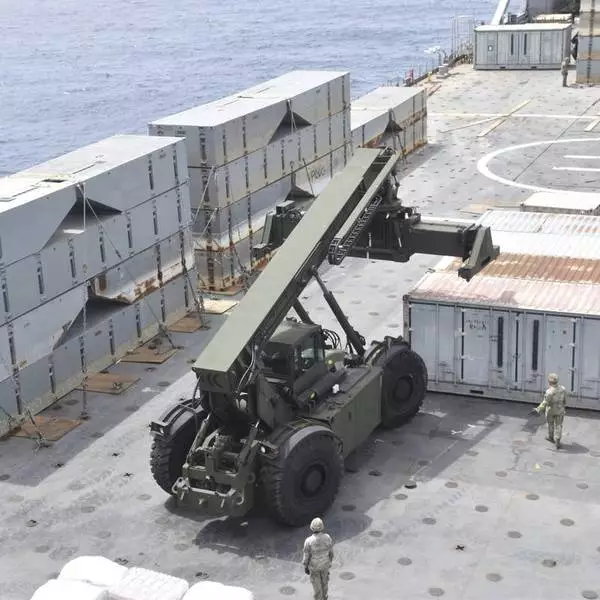"Edison," Random House, by Edmund Morris
The late Edmund Morris, a Pulitzer Prize-winning biographer known for his willingness to brush aside the norms of his genre if it suited his narrative ends, does it again in his final book: a fresh look at Thomas Alva Edison, perhaps America's most prolific and consequential inventor.
Morris, who died in May at age 78, opens "Edison" conventionally enough with a prologue highlighting the inventor's world-changing accomplishments. Starting in his teens as a precocious telegraph operator, the man known as "the Wizard of Menlo Park" invented and patented nearly 1,100 machines, systems and electrical devices until his death in 1931 at the age of 84. Beginning with lower Manhattan in 1882, Edison lit up entire cities using long-burning incandescent lightbulbs and electrical dynamos. He invented the phonograph and a host of other sound devices that brought recorded voices and music into living rooms and cinemas. Besides those signature accomplishments, Edison was responsible for, among many other things, the first universal stock ticker, movie camera, alkaline reversible battery, the first industrial research and development laboratory (at Menlo Park, New Jersey), even the world's biggest rock crusher, invented while spending years on one of his least successful ventures trying to mine iron ore from a western New Jersey mountain.
He did all this on a lifelong diet consisting mainly of plain milk and a brutal work regimen of 18 hours a day, often at the expense of his personal life with his two wives and six children. Nearly deaf since age 12, Edison found a blessing in the silence as a way to shut out distractions. And while he relished and promoted his worldwide fame, he never cared for labels like "genius" or "wizard."
"I never had an idea in my life," he once told a reporter. "I've got no imagination. ... My so-called inventions already existed in the environment — I took them out. ... The industrious one coaxes it from the environment; the drone lets it lie there while he goes off to the baseball game. The 'genius' hangs around his laboratory day and night."
After this introductory section, Morris' narrative takes a highly unorthodox turn by describing the inventor's later years in the opening chapters. He then proceeds backward, decade by decade, culminating with Edison's younger years when many of his most familiar and consequential inventions in electricity and sound replication occurred.
Morris' willingness to breach the organizational norms of biography may not surprise readers familiar with his even bolder previous work, "Dutch: A Memoir of Ronald Reagan," in which Morris included himself as a made-up Zelig-like character who "knew" the former president back to his youthful days. He claimed this device gave him a way to share insights he had gained about the hard-to-penetrate former president. But the resulting blend of fact and fiction in such a high- profile biography caused a ruckus among many critics and historians.
Morris never directly addresses why he presents Edison's life in reverse chronological order. But he drops a possible clue in his endnotes by asserting that previous Edison biographies offered only scant details about his later life. Whatever the reason, Morris' decision to begin his book with lesser known details about the aging Edison's inventions and exploits makes for a rousing start. Edison tried during the 1920s to help free America from its dependency on foreign rubber in the early auto age by trying to identify plants capable of producing enough commercially viable rubber that would thrive in American soil (he never did). We also learn about Edison's many inventions in support of the Allied cause during World War I despite his personal pacificism.
There were episodes, miscalculations and loose-tongued pronouncements, especially late in life, that further humanize Edison's story. He made a losing bet (at least at the time) on battery-operated cars versus the internal combustion engine as the automobile age dawned. He caused international shock waves by questioning the existence of God or an afterlife. The ultimate empiricist, Edison didn't hide his contempt for academic scientists whom he considered impractical — "the bungleheaded fraternity," as he called them.
Morris' genre-bending biography of Edison is a briskly written, fact-packed work that, like its subject, is also highly illuminating.
WASHINGTON (AP) — The U.S. military finished installing a floating pier for the Gaza Strip on Thursday, with officials poised to begin ferrying badly needed humanitarian aid into the enclave besieged over seven months of intense fighting in the Israel-Hamas war.
The final, overnight construction sets up a complicated delivery process more than two months after U.S. President Joe Biden ordered it to help Palestinians facing starvation as food and other supplies fail to make it in as Israel recently seized the key Rafah border crossing in its push on that southern city on the Egyptian border.
Fraught with logistical, weather and security challenges, the maritime route is designed to bolster the amount of aid getting into the Gaza Strip, but it is not considered a substitute for far cheaper land-based deliveries that aid agencies say are much more sustainable. The boatloads of aid will be deposited at a port facility built by the Israelis just southwest of Gaza City and then distributed by aid groups.
U.S. troops will not set foot in Gaza, American officials insist, though they acknowledge the danger of operating near the war zone.
Heavy fighting between Israeli troops and Palestinian militants on the outskirts of Rafah has displaced some 600,000 people, a quarter of Gaza’s population, U.N. officials say. Another 100,000 civilians have fled parts of northern Gaza now that the Israeli military has restarted combat operations there.
Pentagon officials said the fighting in Gaza wasn’t threatening the new shoreline aid distribution area, but they have made it clear that security conditions will be monitored closely and could prompt a shutdown of the maritime route, even just temporarily. Already, the site has been targeted by mortar fire during its construction and Hamas has threatened to target any foreign forces who “occupy” the Gaza Strip.
The “protection of U.S. forces participating is a top priority. And as such, in the last several weeks, the United States and Israel have developed an integrated security plan to protect all the personnel who are working," said Navy Vice Adm. Brad Cooper, a deputy commander at the U.S. military's Central Command. "We are confident in the ability of this security arrangement to protect those involved.”
U.S. troops anchored the pier at 7:40 a.m. local time Thursday, the military's Central Command said in a statement, which stressed that none of its forces entered the Gaza Strip.
“Trucks carrying humanitarian assistance are expected to begin moving ashore in the coming days,” the statement said. “The United Nations will receive the aid and coordinate its distribution into Gaza.”
It wasn't immediately clear which U.N. agency would be involved.
Israeli forces will be in charge of security on the shore, but there are also two U.S. Navy warships near the area in the eastern Mediterranean Sea, the USS Arleigh Burke and the USS Paul Ignatius. Both ships are destroyers equipped with a wide range of weapons and capabilities to protect American troops off shore and allies on the beach.
Aid agencies say they are running out of food in southern Gaza and fuel is dwindling, which will force hospitals to shut down critical operations and halt truck deliveries of aid. The United Nations and other agencies have warned for weeks that an Israel assault on Rafah, which is on the border with Egypt near the main aid entry points, would cripple humanitarian operations and cause a disastrous surge in civilian casualties.
More than 1.4 million Palestinians — half of Gaza’s population — have been sheltering in Rafah, most after fleeing Israel’s offensives elsewhere.
The first cargo ship loaded with 475 pallets of food left Cyprus last week to rendezvous with a U.S. military ship, the Roy P. Benavidez, which is off the coast of Gaza. The pallets of aid on the MV Sagamore were moved onto the Benavidez. The Pentagon said moving the aid between ships was an effort to be ready so it could flow quickly once the pier and the causeway were installed.
The installation of the pier several miles (kilometers) off the coast and of the causeway, which is now anchored to the beach, was delayed for nearly two weeks because of bad weather and high seas. The sea conditions made it too dangerous for U.S. and Israeli troops to secure the causeway to the shore and do other final assembly work, U.S. officials said.
According to a defense official, the Sagamore’s initial shipment was estimated to provide enough to feed 11,000 people for one month. The official spoke on the condition of anonymity to provide details not yet made public.
Military leaders have said the deliveries of aid will begin slowly to ensure the system works. They will start with about 90 truckloads of aid a day through the sea route, and that number will quickly grow to about 150 a day. But aid agencies say that isn't enough to avert impending famine in Gaza and must be just one part of a broader Israeli effort to open land corridors.
Biden used his State of the Union address on March 7 to order the military to set up a temporary pier off the coast of Gaza, establishing a sea route to deliver food and other aid. Food shipments have been backed up at land crossings amid Israeli restrictions and intensifying fighting.
Under the new sea route, humanitarian aid is dropped off in Cyprus where it will undergo inspection and security checks at Larnaca port. It is then loaded onto ships — mainly commercial vessels — and taken about 200 miles (320 kilometers) to the large floating pier built by the U.S. military off the Gaza coast.
There, the pallets are transferred onto trucks, driven onto smaller Army boats and then shuttled several miles (kilometers) to the floating causeway, which has been anchored onto the beach by the Israeli military. The trucks, which are being driven by personnel from another country, will go down the causeway into a secure area on land where they will drop off the aid and immediately turn around and return to the boats.
Aid groups will collect the supplies for distribution on shore, with the U.N. working with the U.S. Agency for International Development to set up the logistics hub on the beach.
Sabrina Singh, Pentagon spokeswoman, told reporters that the project will cost at least $320 million, including the transportation of the equipment and pier sections from the United States to the coast of Gaza, as well as the construction and aid delivery operations.
Associated Press writer Jon Gambrell in Dubai, United Arab Emirates, contributed to this report.

US military says Gaza Strip pier project is completed, aid to soon flow as Israel-Hamas war rages on

US military says Gaza Strip pier project is completed, aid to soon flow as Israel-Hamas war rages on

In this image provided by the U.S. Army, soldiers assigned to the 7th Transportation Brigade (Expeditionary) and sailors attached to the MV Roy P. Benavidez assemble the Roll-On, Roll-Off Distribution Facility (RRDF), or floating pier, off the shore of Gaza on April 26, 2024. The U.S. expects to have on-the-ground arrangements in Gaza ready for humanitarian workers to start delivering aid this month via a new U.S.-backed sea route for Gaza aid. An official with the U.S. Agency for International Development tells the AP that humanitarian groups expect to have their part of preparations complete by early to mid-month. (U.S. Army via AP)












